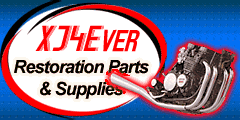-
Some members were not receiving emails sent from XJbikes.com. For example: "Forgot your password?" function to reset your password would not send email to some members. I believe this has been resolved now. Please use "Contact Us" form (see page footer link) if you still have email issues. SnoSheriff
Hello Guest. You have limited privileges and you can't "SEARCH" the forums. Please "Log In" or "Sign Up" for additional functionality. Click HERE to proceed.
Clean Your Own Carb's - The Whole 9 Yards - by: Rick Massey
Discussion in 'XJ DIY How-To Instructions' started by RickCoMatic, Jan 2, 2007.
- Thread Status:
- Not open for further replies.
Page 1 of 2
Page 1 of 2
- Thread Status:
- Not open for further replies.

